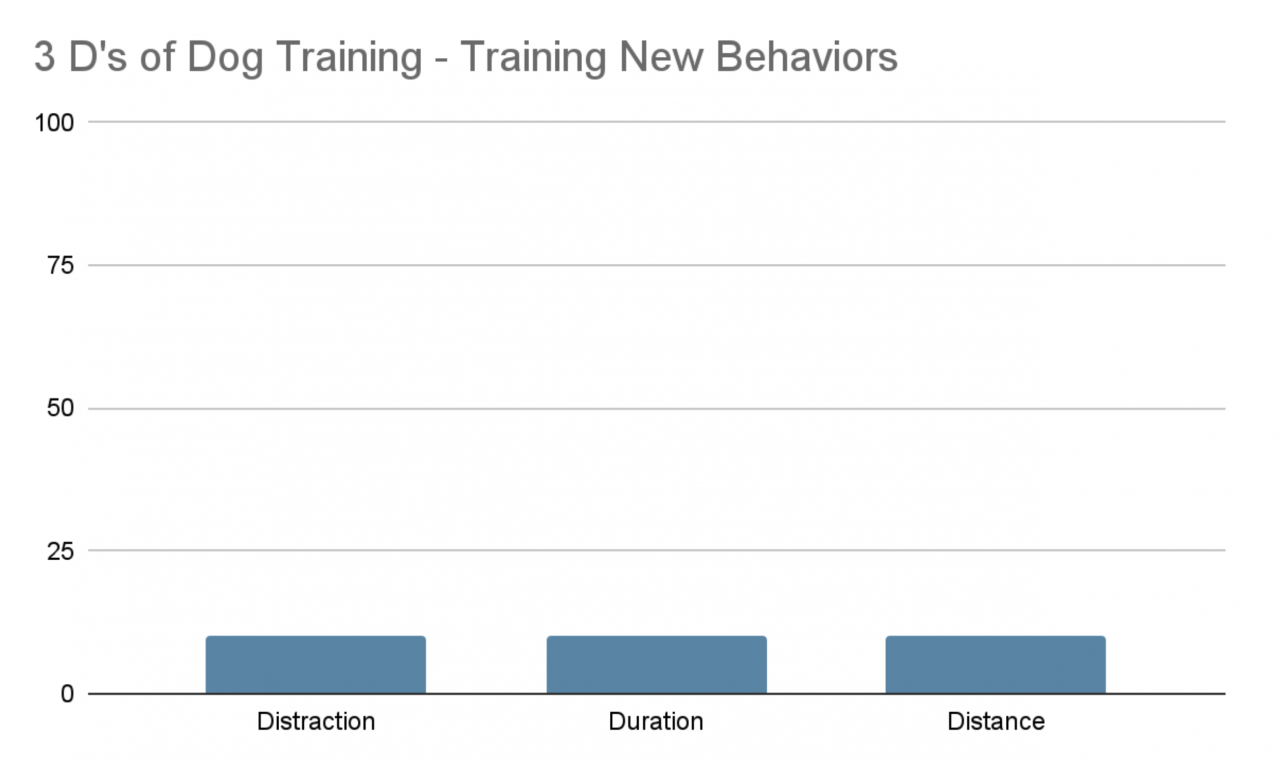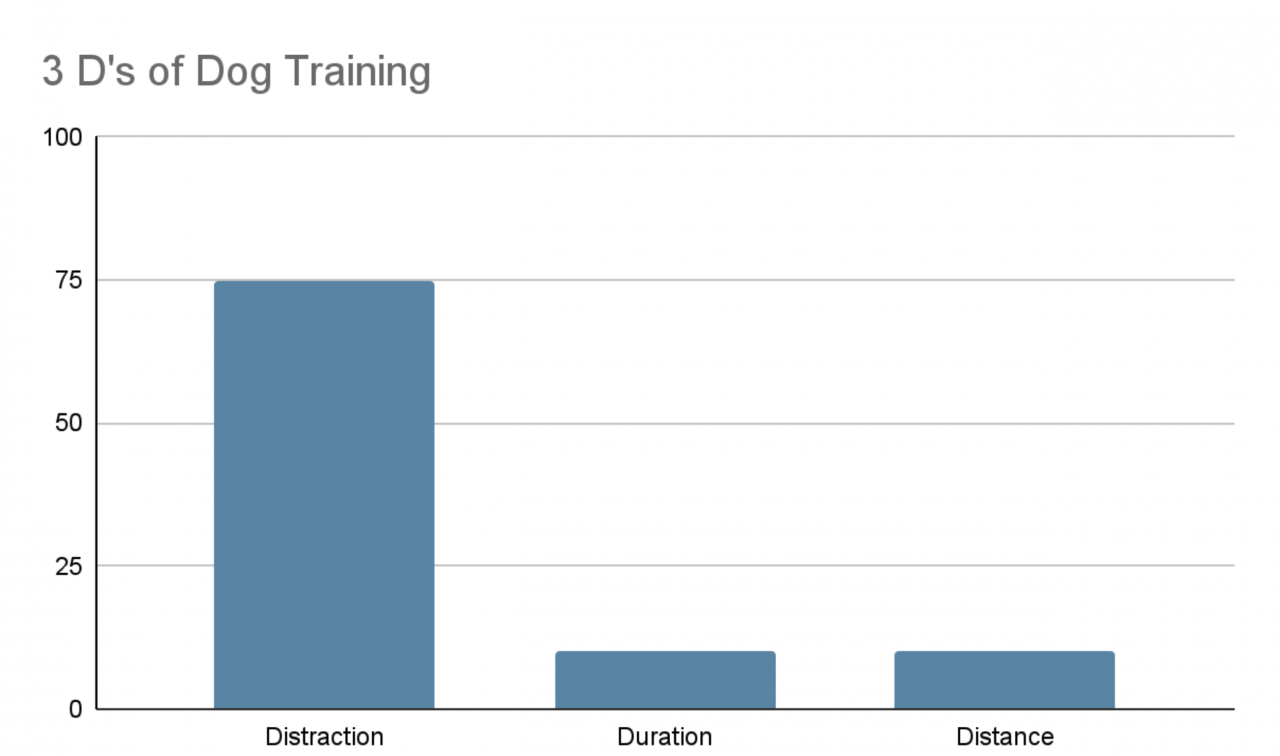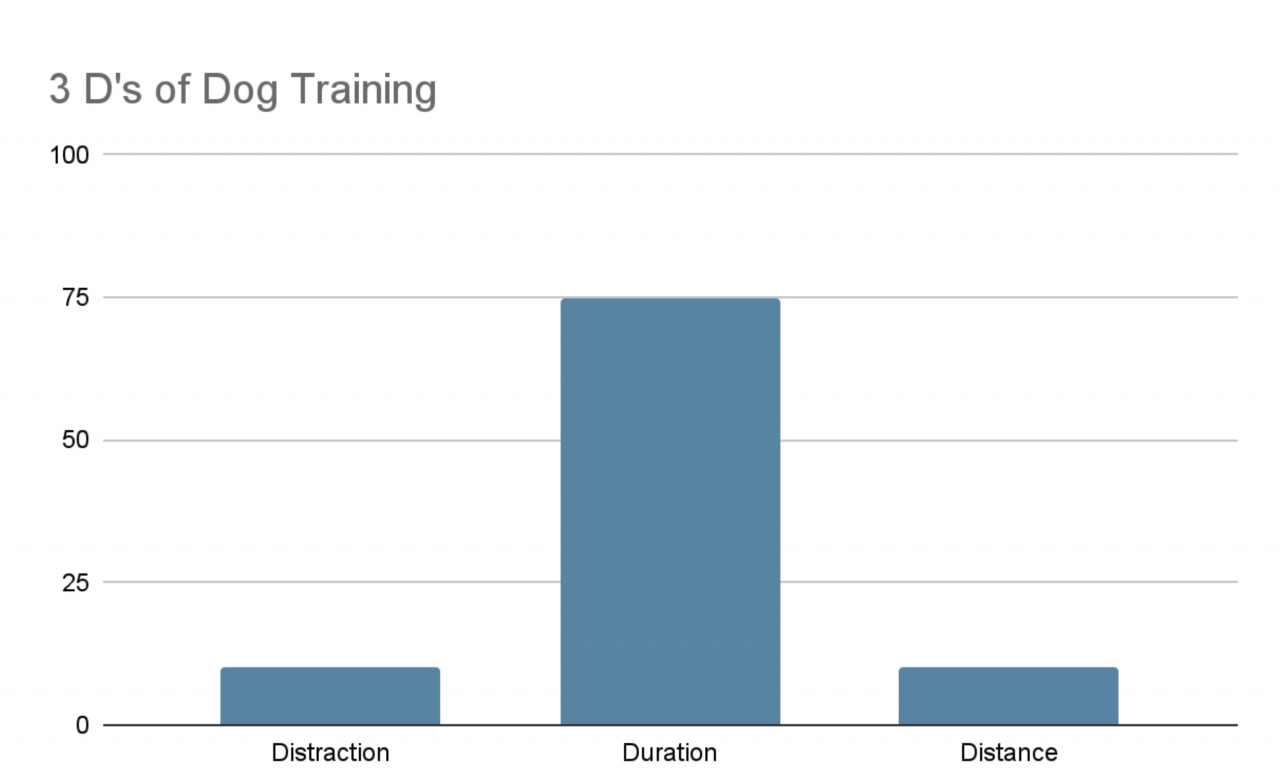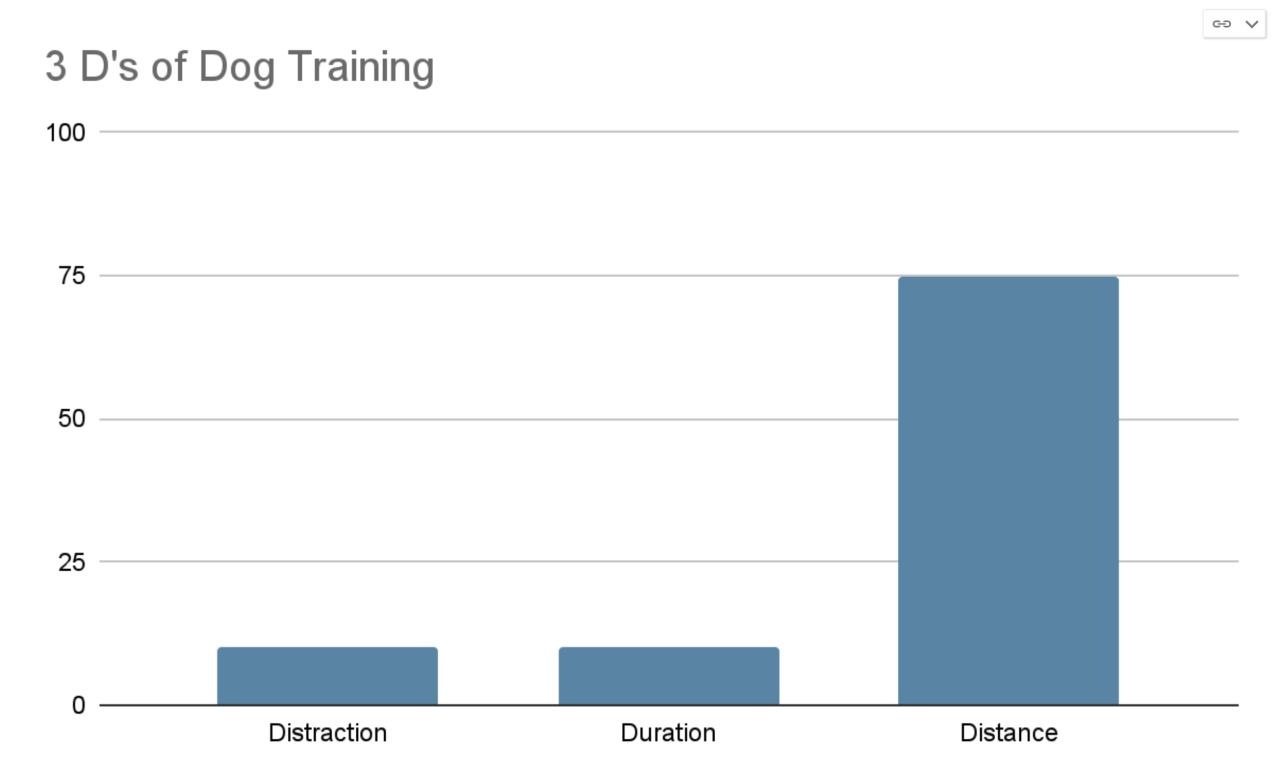The 3 D's and Why They Matter in Dog Training
Have you heard of the 3 D's of dog training? It's a pretty popular term that many trainers use. The 3 D's refer to Distraction, Duration, and Distance. These are one way to categorize the difficulties or challenges in dog training.
Distraction refers to both the environment and things in the environment that are distracting. Generalization (moving to a new environment to help your dog learn the behavior more thoroughly in all settings) is a form of distraction.
Duration is how long the dog is performing the behavior. It can also refer to the number of reps of a behavior, or even how many behaviors are chained together at one time.
Distance can mean a couple of different things. Distance between the dog and the handler is one part. The other is distance from a distraction(s). The farther the dog is away from a distraction, the easier it will be for the dog to perform behaviors.
If you think of Distraction, Duration, and Distance as challenges, it's easy to remember that you should only increase one at a time. However in practice, people often try to increase the challenges too quickly, or increase two or even all of them at the same time. In order for your dog to be successful, you want to be sure that two out of three are as close to baseline as possible.
Training New Behaviors - Baseline
When training new behaviors, all 3 D's should be easy. You should be in a fairly sterile environment that the dog is used to, with few distractions. You will keep your training session short and not ask for too many reps, and you'll stay close to your dog.
Once your dog is very comfortable with the behavior, you can start increasing one challenge at a time.
Increasing Distractions
When you start introducing distractions to your dog, you will make sure that the sessions are short and that you start close to your dog. Don't ask for a 30 second stay with you across the room when you're adding distractions!
Increasing Duration
When you start to add duration to the stay, go back to your sterile environment with few distractions. Stay close to your dog and build duration slowly.
Increasing Distance
When you start increasing distance from your dog, be sure you're decreasing distraction and duration. Likewise, if you are getting closer to distractions, all other challenges should become easier, including other distractions and duration of performing.
Once your dog has gone through these steps, then you can start thoughtfully increasing one challenge and adding a second challenge. Increase the difficulty slowly and be sure you're building on success!
Let's use a simple game, like Where's Your Brain, as an example. (Not sure what Where's Your Brain is? Learn more HERE!)
Teach the Where's Your Brain game in a familiar environment without many distractions.
In that familiar environment, start adding distractions. Start easy, with some cookies or a toy on a table or in a container. Your distraction should not be easily accessible.
As the dog does well, bring in a little tougher distractions. "Tough" is going to vary from dog to dog, but try to build the difficulty slowly.
Throughout this process, listen to your dog! If he's staring at the distractions in between reps or is slow to respond to cues, he's not ready for things to get more difficult!
When you've done some work in your sterile environment with distractions and your dog is doing well, you can start working on duration. Get rid of your distractions and start asking your dog for more duration. Can he do Where's Your Brain a little longer? Can he perform several behaviors instead of just one?
So now you have success with distractions and a bit of duration in a sterile environment. Time to increase distance! For Where's Your Brain, start with a tiny distraction far away. Work toward getting closer to that distraction.
Once you've done all three independently, start slowly increasing multiple challenges at the same time. Always build on success!
There's one more really important thing that I'd like to talk about. When you make the behavior more difficult, you must return to your sterile low-distraction environment. Here's a great example.
This is Ted, a young dog who had only been with his new mom for a few weeks. In this session, Ted showed great improvement from his previous session, particularly in regards to frustration jumping. However, I wasn't sure that Ted was really making eye contact with his mom. To me it looked like he was just looking at the treats.
I reminded Ted's mom to wait for eye contact and then click/reward. Here is the next video that I got.
You can see in this video Ted really struggles!! Notice it's a much busier and more distracting location than the last place he trained. He started jumping more because he was frustrated. Because we changed the rules of the game (eye contact), he wasn't sure what was right anymore.
I told Ted's mom that she was basically teaching him a new behavior: eye contact. Because she increased her criteria, other challenges needed to get easier. I suggested that she take this game back to her house where there weren't many distractions. Her next video was taken in her kitchen, and Ted was about perfect! We were able to build on that and soon she was getting beautiful eye contact in much more distracting environments.
This is a really simple example, but it works anytime you introduce a new behavior. Go back to baseline on distractions, duration, and distance and your dog will learn much more quickly!
By accepting you will be accessing a service provided by a third-party external to https://www.fenzidogsportsacademy.com/



